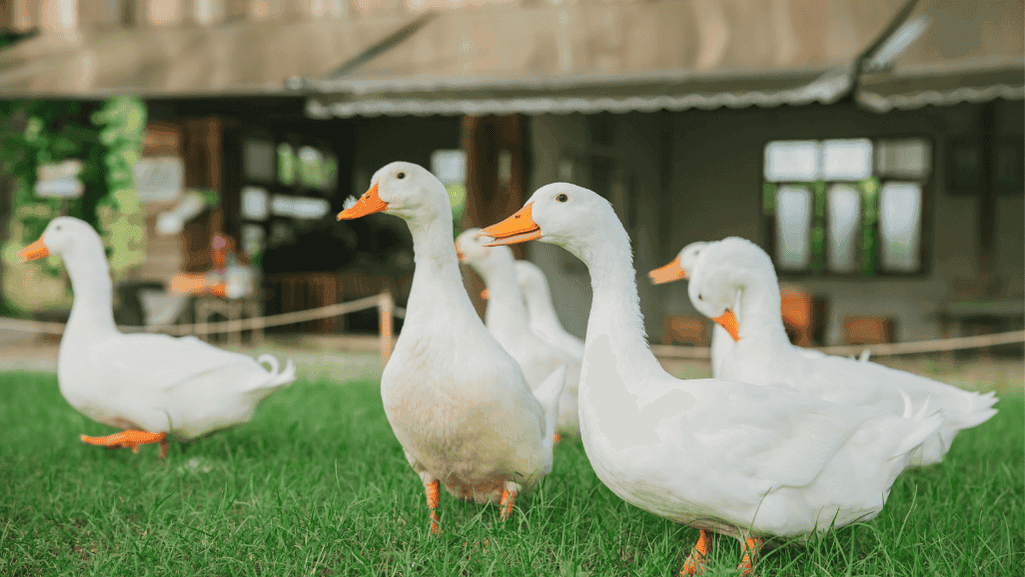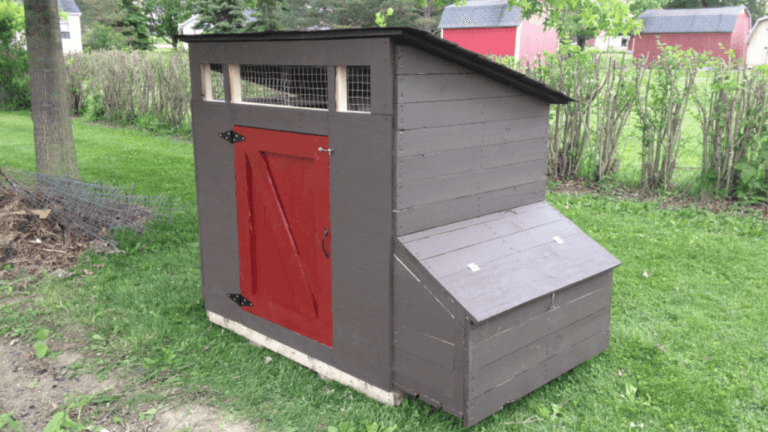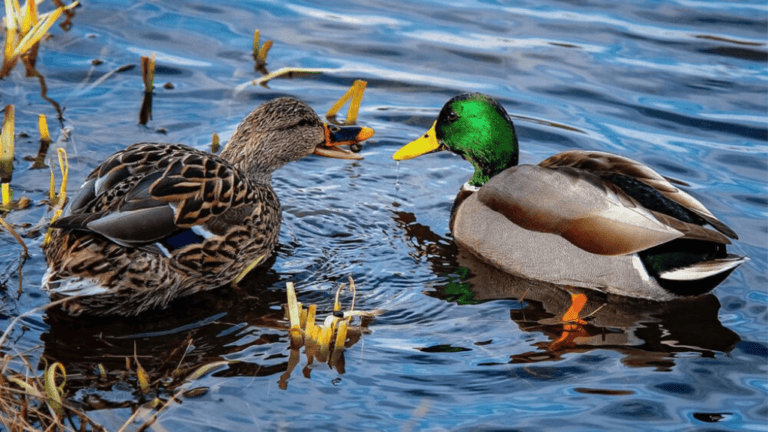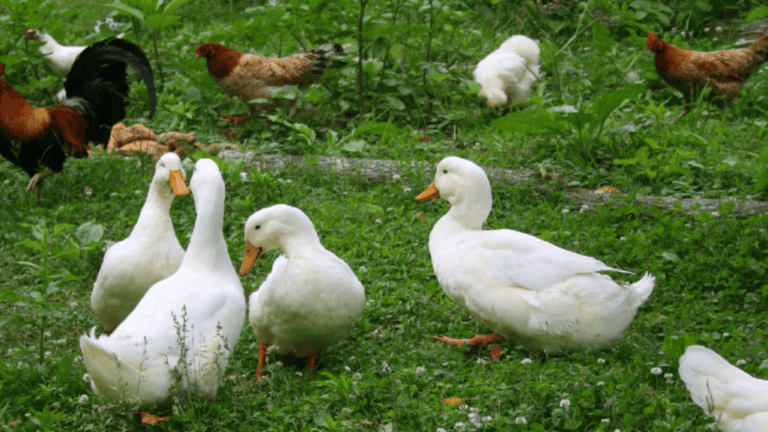Raising ducks in your backyard can turn it into a peaceful haven. It’s not just for big farms but also works well in cities. Choosing the best backyard ducks depends on what you want and your space. You might prefer small, quiet ducks or bigger ones for more eggs.
Finding the right backyard duck breed guide is key. The right ducks can help control pests and give you fresh eggs. They also make your home more beautiful and diverse. Adding urban duck breeds is a step towards a greener lifestyle, even in small spaces.
Enjoy the fun of raising ducks in the backyard, no matter how big your yard is. Ducks bring unique personalities to your garden or yard. They can become the highlight of your outdoor space.
Key Takeaways
- Ducks can thrive in both urban and rural settings, offering companionship and practical benefits.
- Selecting the right duck breed is crucial for a successful and fulfilling backyard duck-keeping experience.
- Popular starter duck breeds include Call Ducks, Khaki Campbells, and Indian Runners.
- Creating a comfortable habitat is key to a happy and healthy backyard duck flock.
- Ducklings have specific care needs, including temperature-controlled environments and niacin-rich diets for optimal growth.
- Small duck varieties are particularly suitable for urban settings and smaller properties.
Discovering the Delight of Backyard Duck Breeds
Raising backyard ducks is both rewarding and educational, especially for newcomers. This section focuses on the basics of duck keeping. It covers everything from choosing the right breed to the many benefits these birds bring.
Introduction to Raising Ducks in Your Backyard
For beginners, understanding duck breed selection is key. Recommended breeds include the gentle Call Ducks, prolific Khaki Campbells, and the energetic Indian Runners. These breeds are easy to care for and open the door to the world of backyard poultry.
It’s best to start with at least two ducklings. They need each other for social interaction. Buying from reputable sources like local hatcheries or online suppliers ensures healthy birds.
The Benefits of Having Ducks As Part of Your Home Oasis
Ducks add value to any backyard in many ways. They are great for pest control, with breeds like the Indian Runner eating up to 200 locusts a day.
Ducks are also more adaptable to different climates than other poultry. Some breeds, like the Rouen and Aylesbury, are very cold-hardy. Others, like the Pekin and Indian Runner, do well in warmer weather.
But ducks are more than just useful. They are also calm companions. Their fun antics and soothing presence make your backyard a peaceful place.
Adding ducks to your home can be a game-changer. With so many breeds to choose from, each with its own perks, ducks can greatly improve your life. They bring joy and relaxation to your daily routine.
Identifying the Perfect Backyard Duck Breed for Your Needs
Keeping ducks in your backyard is a big decision. You need to think about backyard duck breed selection carefully. Different breeds have unique benefits and traits. You should consider the climate, egg-laying, and how you plan to use them.
When comparing backyard duck breeds, look at their size, appearance, and how well they fit your home. For example, if you want lots of eggs, Khaki Campbells and Golden 300 hybrids are great choices.
| Breed | Weight | Egg Production (Eggs per year) |
|---|---|---|
| Swedish | 5-8 pounds | 130-180 |
| Buff | 5-7 pounds | 150-220 |
| Cayuga | 6-7 pounds | 130-180 |
| Golden 300 Hybrid | 4.5-6 pounds | ~300 |
| Khaki Campbell | Variable | Highly prolific |
Looking at backyard duck breed characteristics helps you choose the right one. Aylesbury ducks are great for meat because they’re big. East Indies ducks are better as pets because they’re small and lay fewer eggs.
Remember, ducks like to be with others. They do best in pairs or groups. Make sure you have enough space and can care for the number of ducks you want. This careful choice will make your backyard duck experience happy and fulfilling.
An Overview of Popular Backyard Duck Breeds
Looking into the best ducks for backyards means knowing each breed’s special traits. Pekin, Rouen, and Khaki Campbell ducks are top picks. They bring different benefits for both new and seasoned duck lovers.
If you’re into Pekin duck characteristics and raising them, they’re known for being friendly. They’re great for small farms or gardens. They lay lots of eggs, up to 200 a year, making them popular for both meat and eggs.
Pekin Duck: The All-Time Favorite
The Pekin duck is loved for its efficient egg and meat production. It’s also friendly, making it a hit for backyard fun. They get along well with other birds and are easy for beginners to care for.
Rouen Duck: The Majestic Beauty
Rouen ducks are prized for their stunning looks that beautify any space. They’re a bit heavier and lay 140 to 180 eggs a year. But, their calm nature and beauty make up for the slightly lower egg count.
Khaki Campbell Ducks: The Prolific Egg Layers
Khaki Campbell ducks lead in egg production for backyard breeds. They can lay up to 300 eggs a year. For those focused on eggs, these ducks are a top choice for their high productivity.
| Breed | Egg Production | Characteristics |
|---|---|---|
| Pekin | 130-200 eggs/year | Friendly, Hardy, Suitable for beginners |
| Rouen | 140-180 eggs/year | Visually striking, Calm, Larger size |
| Khaki Campbell | Up to 300 eggs/year | Top egg producer, Resilient, Prefers cohabitation |
Each breed offers something special, whether it’s egg production, looks, or ease of care. The choice depends on what matters most to you, like eggs, care, or the joy of watching them in your garden.
Backyard Duck Breed Characteristics and Care
Knowing how to care for backyard duck breed is key to their health and happiness. Each breed is different, with its own size, personality, and egg-laying skills. This means they need special care.
The Muscovy duck is quiet and caring, but it gets cold easily. It needs warmth in the winter. Indian Runner ducks, on the other hand, are active and need lots of room to play and explore.
It’s important to give them the right backyard duck nutrition. Ducks start laying eggs at 4 to 7 months old. They need food that helps them lay eggs and stay healthy.
Ducks need niacin for strong bones and energy. Start them on non-medicated starter feed, then switch to layer feed as they grow. The right food helps avoid problems like leg issues and obesity, especially in bigger breeds like the Pekin.
To keep your ducks healthy, provide a safe and cozy place. They need room to forage and bathe. This keeps them physically and mentally well.
- Make sure their pens protect them from predators and bad weather. They should have a place to hide from the sun or rain.
- They need water for drinking and for fun activities like dabbling and preening. This keeps their feathers clean.
- A pool or deep water bowl is great for their eyes and nose health.
Each duck should have 4-6 square feet in the coop and 16 square feet outside. Good housing is crucial for a healthy flock.
| Breed | Space Requirement (sq ft) | Egg Production Per Year | Unique Care Needs |
|---|---|---|---|
| Muscovy | 20 | 80-120 | Need for warmth in colder climates, quiet, requires more space |
| Indian Runner | 16 | 200+ | High energy, needs ample space to roam |
| Pekin | 16 | 125-225 | Prone to obesity, requires diet monitoring |
| Khaki Campbell | 16 | Up to 300 | Robust egg layers, need consistent feed quality |
In conclusion, it’s important to tailor their housing, diet, and understand their needs. By doing this, you can have a happy and productive backyard flock.
Setting Up Your Backyard Duck Habitat
Creating a backyard duck coop setup needs careful thought. It’s important to ensure your ducks are healthy and safe. The backyard duck coop must meet duck pen requirements and have a duck coop design that focuses on space, safety, and duck behavior.
Designing a Comfortable and Safe Duck Coop
To create a safe duck habitat, start by knowing how much space ducks need. RSPCA says each duck should have 1.5 square meters in the day pen and 0.5 square meters at night. The coop’s flooring should be soft, like dirt or straw, to protect their feet.
Good ventilation, shade, and wind protection are key for a healthy coop. This ensures your ducks live well.
Essential Considerations for Your Backyard Duck Coop and Run
Place the coop to face away from the wind but still get sunlight. It should be easy to clean, like having a removable metal floor in the nesting area. Make sure the entrance is big enough for your ducks to move around comfortably.
Waterers should be designed to keep water clean. Ducks can easily foul their water, so it’s important to keep it fresh.
Keeping predators out is vital. Use galvanized hardware cloth to protect the coop from predators and rodents. This helps keep the coop safe and strong. Catskill Animal Sanctuary suggests giving ducks at least 6 square feet of space in shelters.
Think about your ducks’ diet when setting up your backyard duck coop setup. Ducks eat more than chickens but lay eggs more efficiently. Make sure they have clean, separate areas for food and water to help them lay eggs well.
Raising Healthy Ducks: Nutrition and Health Management
Keeping your backyard ducks healthy starts with knowing their nutritional needs. It also means preventing diseases. Whether you have ducks for friends, eggs, or meat, their health is key.
Understanding the Nutritional Needs of Different Duck Breeds
Different duck breeds need different foods. Ducklings need a lot of protein to grow strong. Their starter feed should have about 20% protein.
As they grow, their protein needs drop to about 14.5%. Niacin is also important for ducklings. Without enough, they can get sick with perosis or slipped tendon. Most feeds have enough niacin, but extra can help.
Common Health Issues in Backyard Ducks and Prevention Strategies
Keeping your ducks healthy means stopping diseases before they start. Ducks can get sick from toxins like aflatoxin, even at low levels. So, it’s important to check their food quality.
Good housing is also key. Ducks need enough room and a clean, dry place to live. They should have about two square feet each on wire and one square foot on litter. Also, make sure their waterers are clean to avoid health problems.
| Age | Protein | Niacin (mg/kg) | Feeder Space (inches) | Space per Duckling (sq ft) |
|---|---|---|---|---|
| 0-3 weeks | 20% | 55 | 1.5 | 2 (wire)/1 (litter) |
| 4 weeks to maturity | 14.5% | 55 | 1.5 | 2 (wire)/1 (litter) |
| Adult | Varies | 55 | 1.5 | Varies based on breed |
By following these tips, you can keep your ducks healthy. This helps them grow well and live happily in your backyard.
The Basics of Backyard Duckling Care
Raising ducklings in your backyard is rewarding and educational. Proper backyard duckling care helps them grow into healthy ducks. A key part of this is setting up a duck brooder. This provides a controlled space for their early life stages.
Brooder Setup: Creating the Perfect Environment for Baby Ducks
Creating a great baby duck habitat starts with the right temperature and space. The first week, the temperature should be about 90°F. Then, it drops by 7°F each week. This change matches their growth and ability to control their body heat.
Ducklings grow quickly, so they need a big brooder. They must have enough room to move without getting stressed or aggressive. The brooder also needs a safe heat source and non-toxic, absorbent bedding.
It’s important to have clean water and the right food from the start. Ducklings drink and eat a lot, so water needs to be changed often. A shallow dish helps them drink safely without drowning.
Heat Requirements and Growth Stages for Ducklings
Managing duckling heat requirements is key for their survival and growth. The high heat at first helps them adjust to cooler temperatures later. Adjusting the brooder’s temperature is crucial for their outdoor readiness, usually around two months.
Ducklings need high-protein feed at first to support their growth. Later, they move to lower protein levels. Adding brewer’s yeast helps with bone development. Lettuce and herbs provide nutrition and encourage foraging.
| Age (Weeks) | Temperature (°F) | Diet | Water Consumption |
|---|---|---|---|
| 1 | 90 | Starter Feed + Brewer’s Yeast | 0.5 gallons/week |
| 2-3 | 83-76 | Starter Feed | Increases gradually |
| 4-7 | 69-59 | Grower Feed | Up to 0.5 gallons/day |
| 8+ | Room Temp. | Layer Feed | As needed |
By monitoring and adjusting the brooder, ensuring a good diet, and gradually introducing them to the outdoors, you can successfully care for backyard ducklings. This care helps them thrive in their new home, adding joy to any backyard.
Cultivating a Backyard Duck Community: Social Dynamics and Behavior
In today’s world, more people are looking for sustainable and fun activities. Raising backyard duck breeds is one such activity. It’s important to understand backyard duck social behavior to create a happy environment for these birds.
Ducks are social animals and do better in a lively duck community dynamics. To support their well-being, we need to encourage natural behaviors like foraging and socializing. This section will guide you on how to create a thriving duck community in your backyard, ensuring their happiness and health.
- Always ensure there is a clean water source for drinking and bathing to maintain health and hygiene.
- Implement a balanced diet that includes commercial duck feed like Mazuri Waterfowl Feed, along with supplements of fresh vegetables, fruits, and grains.
- Enrichment activities must be a routine part of their life to stimulate their minds and prevent boredom and stress.
- For optimal safety, secure nighttime housing and robust fencing are imperative, protecting them from potential predators.
| Aspect | Recommendation |
|---|---|
| Diet | Commercial feed supplemented with fresh produce |
| Water | Constant access to clean water for health and cleanliness |
| Space | Adequate space for foraging and exercise |
| Social Structure | Maintain a healthy male to female ratio (ideally 1:3 to 1:5) |
| Predator Protection | Secure fencing and covered enclosures |
| Enrichment | Regular activities and environmental enhancements |
| Healthcare | Regular check-ups with avian veterinarians |
Successfully raising backyard duck breeds is more than just meeting their physical needs. It also means understanding and respecting their social behavior. Each duck has its own personality and preferences. Recognizing these differences is key to a harmonious community.
To wrap up, creating a caring environment for ducks is essential. It allows them to interact naturally and fulfill their social needs. By providing the best care, security, and social opportunities, you ensure your ducks live a balanced and happy life.
Backyard Duck Breeds
Choosing the right popular duck breeds for backyard enthusiasts can make your outdoor space better. Ducks can be for looks, eggs, or as pets. Among the top backyard duck breeds, Pekin, Rouen, and Khaki Campbell ducks are favorites.
The Khaki Campbell ducks are known for laying lots of eggs, up to 340 a year. They come from the late 1800s in the UK. Mrs. Adele Campbell created them to lay more eggs without losing quality.
Saxony ducks, almost lost in World War II, lay about 190-240 eggs a year. They were made in the 1930s in Germany. After the war, their numbers went up, and they were recognized by the American Poultry Association in 2000.
Ancona ducks are great for backyards too. They have beautiful feathers and are friendly. They lay 210-280 eggs a year. They’ve been popular in North America since the 1980s, even though they’re not in the American Poultry Association yet.
For more info on these breeds, check out this backyard duck breeds guide. Or, visit Ducks New World for more questions or to meet other duck lovers.
| Breed | Egg Production (Annual) | Weight | APA Recognition |
|---|---|---|---|
| Khaki Campbell | 250-340 | 3.5 – 4 lbs | 1941 |
| Saxony | 190-240 | 6-8 lbs | 2000 |
| Ancona | 210-280 | 5-6 lbs | No |
When picking ducks for your backyard, think about their needs and how they’ll fit in. Each popular duck breed for backyard has its own perks, like looks, personality, or usefulness.
Enjoying the Rewards: Duck Egg Production and Other Perks
Starting a backyard duck egg production project is a unique chance. It brings beauty, companionship, and nutritional benefits. Ducks, especially certain duck breeds for eggs like Khaki Campbells, are known for their egg-laying skills. They produce high-quality eggs in large quantities.
Exploring the Egg-laying Capabilities of Different Duck Breeds
When it comes to backyard duck egg production, some breeds are better than others. For example, Khaki Campbells and similar breeds can lay eggs for many years. This is more than chickens, which often slow down after two years. Ducks are great for those who want eggs for a long time.
| Duck Breed | Eggs per Year | Egg Size Comparison | Foraging Efficiency |
|---|---|---|---|
| Khaki Campbell | 300+ | Larger than chickens | High – includes greens & pests |
| Rouen | 200-250 | Large | Moderate |
| Runner | 250+ | Moderate to large | High – excellent garden pest control |
Utilizing Duck Eggs in Your Kitchen: Health and Culinary Advantages
Duck eggs offer many culinary uses for duck eggs and health benefits of duck eggs. They are bigger and taste richer than chicken eggs. They have a higher yolk-to-white ratio, making them versatile in cooking. Duck eggs are also rich in omega-3 fatty acids, making them a healthier choice for some.
When cooking with duck eggs, they add texture and flavor to baked goods. This makes them perfect for dense, moist recipes. From cakes to custards, the uses for duck eggs are endless. Their thicker shells also mean they last longer, making them convenient to store and use.
Adding ducks to your backyard is more than just a hobby. It’s a way to live sustainably. Ducks provide a steady supply of nutritious eggs, enriching your life and the environment.
Conclusion
Raising backyard ducks is a journey filled with discovery and rewards. Ducks add a serene touch to any garden. They also help control pests and provide nutritious eggs.
From the moment ducklings grow, it’s a quick process. They grow fast, almost weekly. Caring for them, like maintaining a brooder, is crucial.
For beginners, backyard duck breeds information is key. There are breeds perfect for beginners. They need the right food and a safe place to live.
Keeping ducks is about creating a harmonious environment. It’s about knowing their needs. Ducks add charm to our lives with their quacks.
With the right care, your backyard can become a haven for ducks. They will bring joy and a unique sound to your life.











